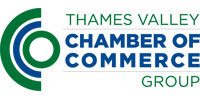There are so many ways to keep in touch with customers or approach new prospects. But a well-written sales letter or email can persuade potential customers to find out more. Follow our steps to writing an effective sales copy.
- Decide what form your sales communication will take. Will you send a sales letter, SMS message or email.
- Consider why you are sending your sales message. Are you announcing a product launch or trying to get a meeting, weigh up whether it is the best means of making your initial approach.
- Try to ensure your message reaches the right person. Check you have the right contact details (whether that is an email address, phone number or physical address).
- Address recipients personally so your message is not dismissed as junk. For example, use an emails recipient's name in your mailing or use a handwritten envelope to help your letter reach the prospect's desk.
- Be personal. Look at the customer's sales history and adapt the mailing copy to reflect their particular buying habits.
- Show that you understand your customer's problems and explain how you can provide a solution. Don't talk broadly about your business - talk about how you can help them, specifically.
- Use the right tone and language for your target customers. For example, you might use technical language for business clients, but adopt a friendlier or informal tone for regular customers or those you know in person.
- Include testimonials or reviews from customers where appropriate to convince new prospects to give your service or products a try. Endorsements will give prospects more faith in you.
- Take your time and avoid spelling or grammatical errors. Mistakes look unprofessional and could undermine your letter's credibility. Get somebody to proofread your letter before it is sent out.
- Put some thought into the design. Ensure it is clearly laid out and easy to read. Include a maximum of three or four lines per paragraph, and add bullet points if necessary.
- Include a call to action, for example 'Call us now'. A direct command is likely to be more effective than a sentence that suggests 'You can contact us…'. A dedicated landing page on your website, with information that directly references to your message is best.
- Include your contact details.
- Follow up your message. Send a follow up email or message or call the customer.
